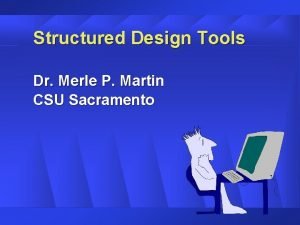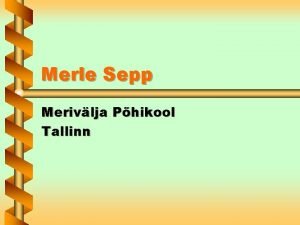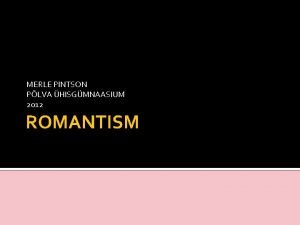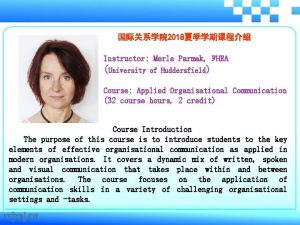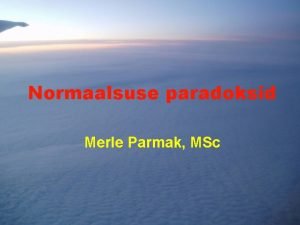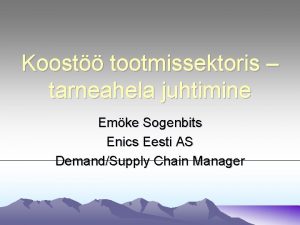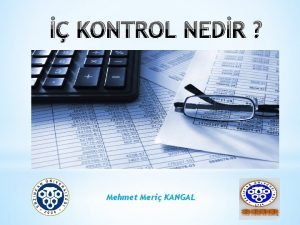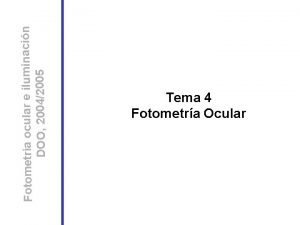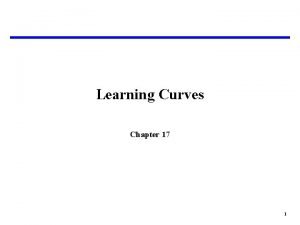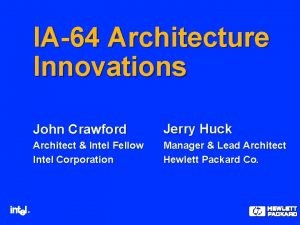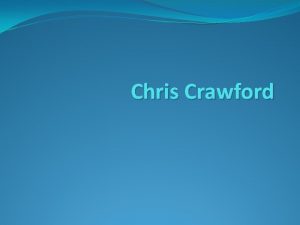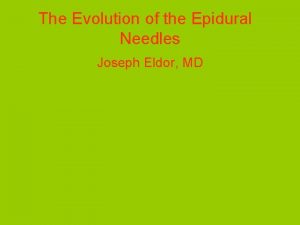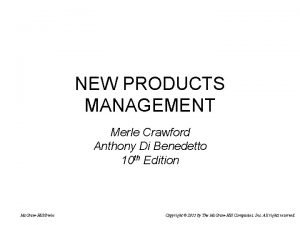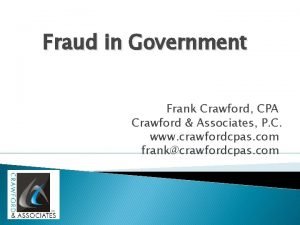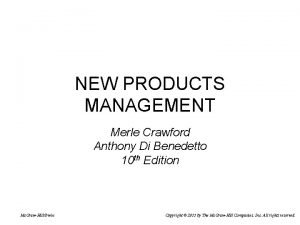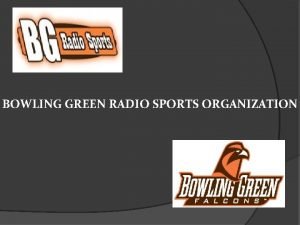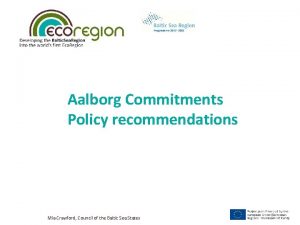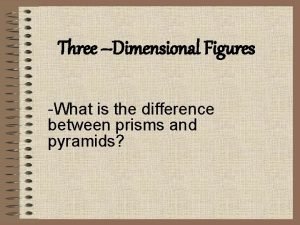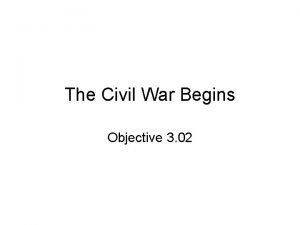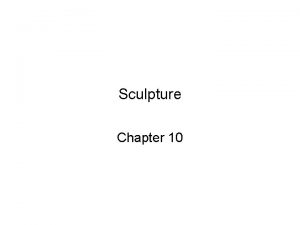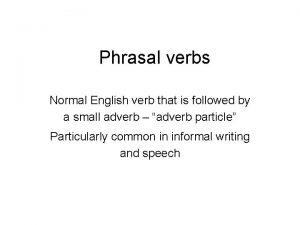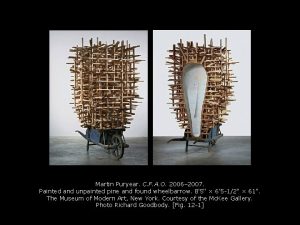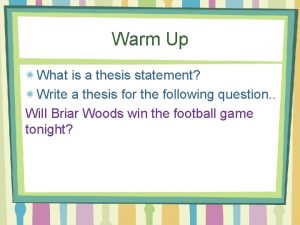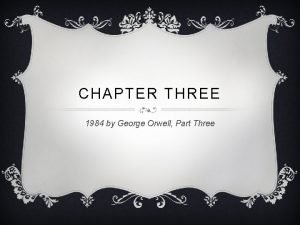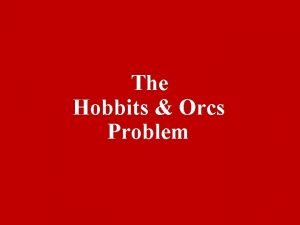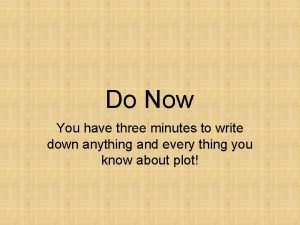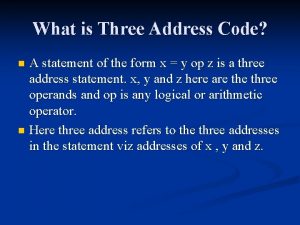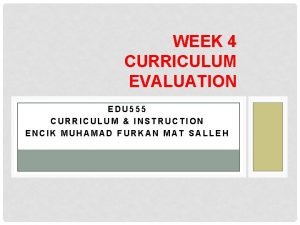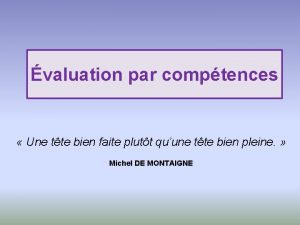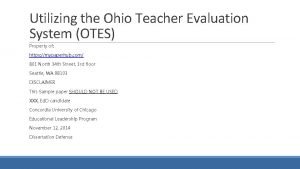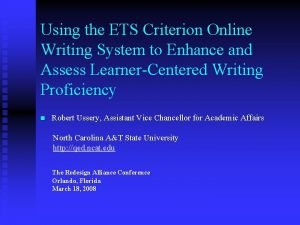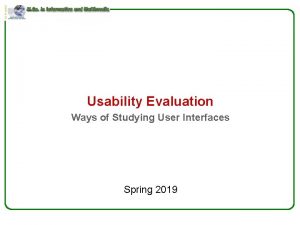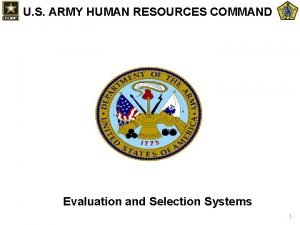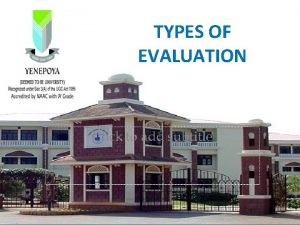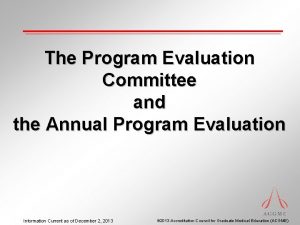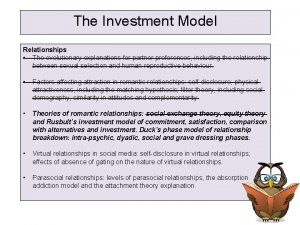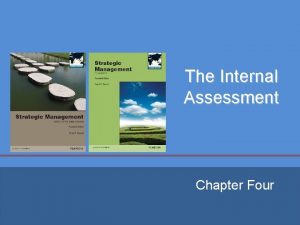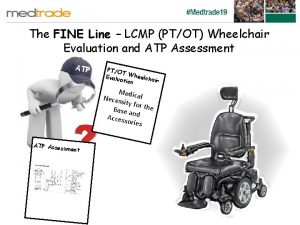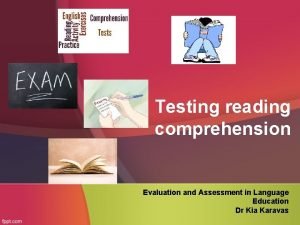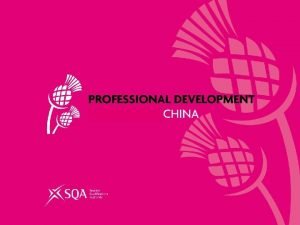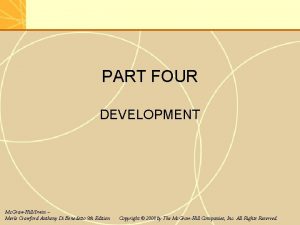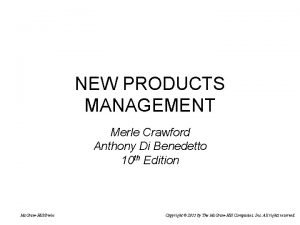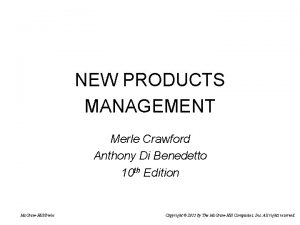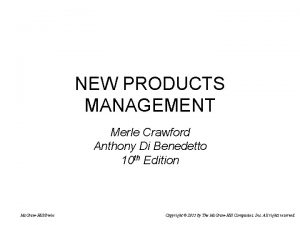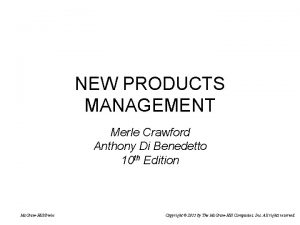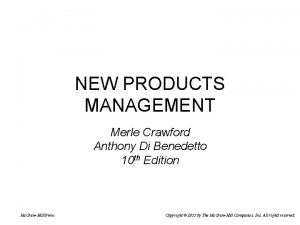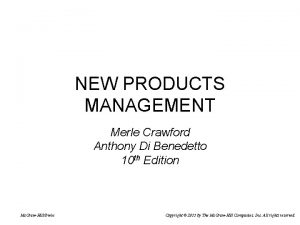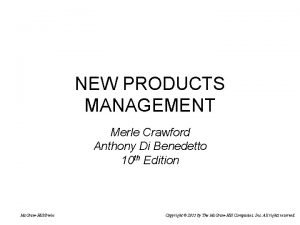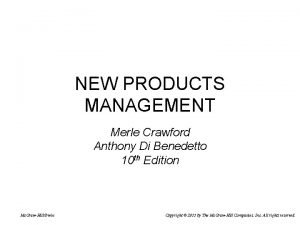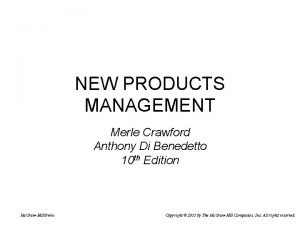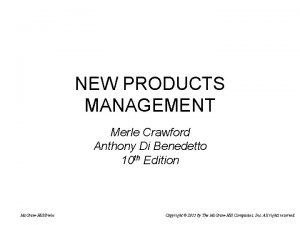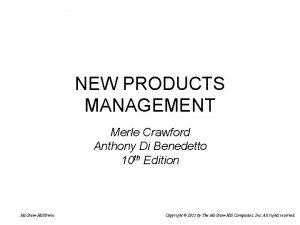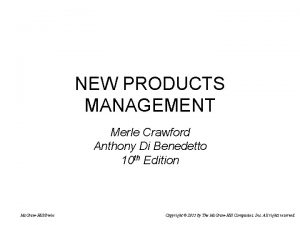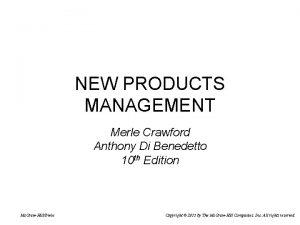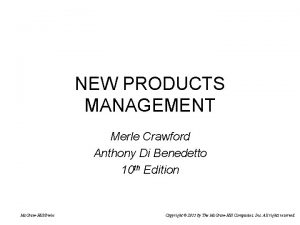PART THREE CONCEPTPROJECT EVALUATION Mc GrawHillIrwin Merle Crawford


















































































- Slides: 82

PART THREE CONCEPT/PROJECT EVALUATION Mc. Graw-Hill/Irwin – Merle Crawford Anthony Di Benedetto 9 th Edition Copyright © 2008 by The Mc. Graw-Hill Companies, Inc. All Rights Reserved.

Concept/Project Evaluation Figure III. 1 8 -2

Chapter 8 The Concept Evaluation System 8 -3

The Evaluation System Figure 8. 1 8 -4

Cumulative Expenditures Curve Figure 8. 2 % of expenditures Many high-tech products Many consumer products Time Launch 8 -5

Risk/Payoff Matrix at Each Evaluation Figure 8. 3 • Cells AA and BB are “correct” decisions. • Cells BA and AB are errors, but they have different cost and probability dimensions. 8 -6

Planning the Evaluation System: Four Concepts • Rolling Evaluation (tentative nature of new products process) • Potholes • People • Surrogates 8 -7

Rolling Evaluation (or, "Everything is Tentative") • Project is assessed continuously (rather than a single Go/No Go decision) • Financial analysis also needs to be built up continuously • Not enough data early on for complex financial analyses • Run risk of killing off too many good ideas early • Marketing begins early in the process • Key: new product participants avoid "good/bad" mindsets, avoid premature closure 8 -8

Potholes Know what the really damaging problems are for your firm and focus on them when evaluating concepts. Example: Campbell Soup focuses on: • 1. Manufacturing Cost • 2. Taste 8 -9

People • Proposal may be hard to stop once there is buy-in on the concept. • Need tough demanding hurdles, especially late in new products process. • Personal risk associated with new product development. • Need system that protects developers and offers reassurance (if warranted). 8 -10

Surrogates • Surrogate questions give clues to the real answer. Real Question Will they prefer it? Surrogate Question Did they keep the prototype product we gave them after the concept test? Will cost be competitive? Does it match our manufacturing skills? Will competition leap in? What did they do last time? Will it sell? Did it do well in field testing? 8 -11

An A-T-A-R Model of Innovation Diffusion Figure 8. 5 Profits = Units Sold x Profit Per Units Sold = Number of buying units x % aware of product x % who would try product if they can get it x % to whom product is available x % of triers who become repeat purchasers x Number of units repeaters buy in a year Profit Per Unit = Revenue per unit - cost per unit 8 -12

The A-T-A-R Model: Definitions Figure 8. 6 • Buying Unit: Purchase point (person or department/buying center). • Aware: Has heard about the new product with some characteristic that differentiates it. • Available: If the buyer wants to try the product, the effort to find it will be successful (expressed as a percentage). • Trial: Usually means a purchase or consumption of the product. • Repeat: The product is bought at least once more, or (for durables) recommended to others. 8 -13

A-T-A-R Model Application 10 million x 40% x 20% x 70% x 20% x $50 Number of owners of video cellphones Percent awareness after one year Percent of aware owners who will try product Percent availability at electronics retailers Percent of triers who will buy a second unit Price per unit minus trade margins and discounts ($100) minus unit cost at the intended volume ($50) = $5, 600, 000 Profits 8 -14

Points to Note About A-T-A-R Model 1. Each factor is subject to estimation. Estimates improve with each step in the development phase. 2. Inadequate profit forecast can be improved by changing factors. If profit forecast is inadequate, look at each factor and see which can be improved, and at what cost. 8 -15

Getting the Estimates for A-T-A-R Model Figure 8. 7 xx: Best source for that item. x: Some knowledge gained. 8 -16

Chapter 9 Concept Testing Mc. Graw-Hill/Irwin – Merle Crawford Anthony Di Benedetto 9 th Edition Copyright © 2008 by The Mc. Graw-Hill Companies, Inc. All Rights Reserved.

Many Ideas Are Eliminated Before Concept Testing • PIC eliminates most new product ideas even before they are developed into concepts. • Ideas of the following types are excluded: – Ideas requiring technologies the firm does not have. – Ideas to be sold to customers about whom the firm has no close knowledge. – Ideas that offer too much (or too little) innovativeness. – Ideas wrong on other dimensions: not low cost, too close to certain competitors, etc. 9 -18

Market Analysis and Initial Reaction • Market analysis: in-depth study of market area that the PIC has selected for focus. – Conducted immediately after PIC approval. • Initial reaction: preliminary, inexpensive assessment of concepts, which may be flowing very quickly at this point. – Avoid “bazooka effect” (quickly blasting out concepts without forethought) – Do not include idea source in initial reaction. – Respect the “fragility of ideas” -- have more than a single person involved. – Use more than pure intuition -- keep records and stay objective. 9 -19

Suggested Questions for the Initial Reaction • Market Worth: what is the attractiveness of the new product to the targeted customer population? • Firm Worth: Is the new product project viewed positively by management? Does this new product project enhance the firm’s competencies? • Competitive Insulation: Can the product’s advantage be maintained against competitive retaliation? 9 -20

Concept Testing Cautions and Concerns • If the prime benefit is a personal sense (aroma, taste). • If the concept involves new art and entertainment. • If the concept embodies a new technology that users cannot visualize. • If concept testing is mishandled by management, then blamed for product failure. • If customers simply do not know what problems they have. 9 -21

What Is a Product Concept Statement? • A statement about anticipated product features (form or technology) that will yield selected benefits relative to other products or problem solutions already available. • Example: “A new electric razor whose screen is so thin it can cut closer than any other electric razor on the market. ” • Recall the importance of getting responses to product concepts and not simply ideas (Chapter 4). 9 -22

Purposes of Concept Testing • To identify very poor concepts so that they can be eliminated. • To estimate (at least crudely) the sales or trial rate the product would enjoy (buying intentions, early projection of market share). • To help develop the idea (e. g. make tradeoffs among attributes). 9 -23

Procedure for a Concept Test • • • Prepare concept statement Clarify specific purposes Decide format(s) Select commercialization Determine price(s) Select respondent type(s) Select response situation Define the interview Conduct trial interviews Interview, tabulate, analyze 9 -24

Some Key Issues in Concept Testing • • Concept statement: narrative, drawing, model? Respondent group: Lead users? Large users? Response situation: Where? How? Interviewing sequence: Believable? Important? Interesting? Would it work? What problems do they see? Would they buy? • Test procedure, change and implement, study findings. 9 -25

Mail Concept Test -- Verbal Description Figure 9. 1 Here is a tasty, sparkling beverage that quenches thirst, refreshes, and makes the mouth tingle with a delightful flavor blend of orange, mint, and lime. It helps adults (and kids too) control weight by reducing the craving for sweets and between-meal snacks. And, best of all, it contains absolutely no calories. Comes in 12 -ounce cans or bottles and costs 60 cents each. 1. How different, if at all, do you think this diet soft drink would be from other available products now on the market that might be compared with it? Very different ( ) ( ) Not at all different 2. Assuming you tried the product described above and liked it, about how often do you think you would buy it? More than once a week ( ) ( ) ( ) Would never buy it 9 -26

Mail Concept Test -- Sketch Figure 9. 2 9 -27

Comfort Benefit Segmentation in Swimsuit Market x xxx x x Segment 2 x Figure 9. 3 x xx x x Segment 3 x x x Segment 1 x x x x Fashion x 9 -28

Joint Space Map Showing Ideal Points Aqualine Islands Comfort Figure 9. 4 3 2 1 Molokai Fashion Splash Sunflare 9 -29

Joint Space Map Showing Ideal Vectors Aqualine Comfort Figure 9. 5 nt B X Islands Molokai 1 e t. S efi en e gm Ove it S Benef rall t 2 n egme Fashion Sunflare Splash 9 -30

Conjoint Analysis in Concept Testing: EZPass • Key attributes: number of accounts to open, how to apply and pay for an account, number of EZPass lanes at each toll plaza, etc. • 11 -minute video of product in action and its effectiveness in reducing congestion. • Respondents all received the video, a questionnaire, and scenario cards showing combinations of attributes. 9 -31

Chapter 10 The Full Screen Mc. Graw-Hill/Irwin – Merle Crawford Anthony Di Benedetto 9 th Edition Copyright © 2008 by The Mc. Graw-Hill Companies, Inc. All Rights Reserved.

The Full Screen • A step often seen as a necessary evil, yet very powerful and with long-lasting effects. • Forces pre-technical evaluation, and summarizes what must be done. • Methods range from simple checklists to complex mathematical models. 10 -33

Purposes of the Full Screen • To decide whether technical resources should be devoted to the project. – Feasibility of technical accomplishment -- can we do it? – Feasibility of commercial accomplishment -- do we want to do it? • To help manage the process. – Recycle and rework concepts – Rank order good concepts – Track appraisals of failed concepts • To encourage cross-functional communication. 10 -34

Screening Alternatives • Judgment/Managerial Opinion • Concept Test followed by Sales Forecast (if only issue is whether consumers will like it) • Scoring Models 10 -35

A Simple Scoring Model Figure 10. 2 Answer: Go boating. 10 -36

Source of Scoring Factor Models Figure 10. 3 10 -37

A Scoring Model for Full Screen Figure 10. 4 Note: this model only shows a few sample screening factors. Factor Score (1 -5) Weighted Score Technical Accomplishment: Technical task difficulty Research skills required Rate of technological change Design superiority assurance Manufacturing equipment. . . Commercial Accomplishment: Market volatility Probable market share Sales force requirements Competition to be faced Degree of unmet need. . . 10 -38

The Scorers • Scoring Team: Major Functions (marketing, technical, operations, finance) New Products Managers Staff Specialists (IT, distribution, procurement, PR, HR) • Problems with Scorers: May be always optimistic/pessimistic May be "moody" (alternately optimistic and pessimistic) May always score neutral May be less reliable or accurate May be easily swayed by the group May be erratic 10 -39

Industrial Research Institute Scoring Model Figure 10. 5 Technical success factors: • • Proprietary Position Competencies/Skills Technical Complexity Access to and Effective Use of External Technology • Manufacturing Capability Commercial success factors: • • • Customer/Market Need Market/Brand Recognition Channels to Market Customer Strength Raw Materials/Components Supply • Safety, Health and Environmental Risks Source: John Davis, Alan Fusfield, Eric Scriven, and Gary Tritle, “Determining a Project’s Probability of Success, ” Research-Technology Management, May-June 2001, pp. 51 -57. 10 -40

Alternatives to the Full Screen • • Profile Sheet Empirical Model Expert Systems Analytic Hierarchy Process 10 -41

A Profile Sheet Figure 10. 6 10 -42

Criteria Based on the New. Prod Studies Figure 10. 7 • Must-Meet Criteria (rated yes/no): – Strategic alignment – Existence of market need – Likelihood of technical feasibility – Product advantage – Environmental health and safety policies – Return versus risk – Show stoppers (“killer” variables) 10 -43

Criteria Based on the New. Prod Studies (continued) Figure 10. 7 (cont’d. ) • Should-Meet Criteria (rated on scales): – Strategic (alignment and importance) – Product advantage (unique benefits, meets customer needs, provides value for money) – Market attractiveness (size, growth rate) – Synergies (marketing, distribution, technical, manufacturing expertise) – Technical feasibility (complexity, uncertainty) – Risk vs. return (NPV, IRR, ROI, payback) 10 -44

Analytic Hierarchy Process (AHP) Figure 10. 9 10 -45

Abbreviated Output from AHP Figure 10. 9 10 -46

Chapter 11 Sales Forecasting and Financial Analysis Mc. Graw-Hill/Irwin – Merle Crawford Anthony Di Benedetto 9 th Edition Copyright © 2008 by The Mc. Graw-Hill Companies, Inc. All Rights Reserved.

Why Financial Analysis for New Products is Difficult • Target users don’t know. • If they know they might not tell us. • Poor execution of market research. • Market dynamics. • Uncertainties about marketing support. • Biased internal attitudes. • Poor accounting. • Rushing products to market. • Basing forecasts on history. • Technology revolutions. 11 -48

Forecasting the Demand For Satellite Radio • In 2000: forecast for 2007 was 36 million subscribers. • In 2001: forecast revised to 16 million. • By end of 2006: actual number of subscribers = 11 million. Source: Sarah Mc. Bride, “Until Recently Full Of Promise, Satellite Radio Runs Into Static, ” Wall Street Journal, August 15, 2006, pp. A 1 -A 9. 11 -49

Forecasters Are Often Right Figure 11. 1 In 1967 they said we would have: • Artificial organs in humans by 1982. • Human organ transplants by 1987. • Credit cards almost eliminating currency by 1986. • Automation throughout industry including some managerial decision making by 1987. • Landing on moon by 1970. • Three of four Americans living in cities or towns by 1986. • Expenditures for recreation and entertainment doubled by 1986. 11 -50

Forecasters Can Be Very Wrong Figure 11. 1 (cont’d. ) They also said we would have: • Permanent base on moon by 1987. • Manned planetary landings by 1980. • Most urbanites living in high-rises by 1986. • Private cars barred from city cores by 1986. • Primitive life forms created in laboratory by 1989. • Full color 3 D TV globally available. Source: a 1967 forecast by The Futurist journal. Note: about two-thirds of the forecasts were correct! 11 -51

Commonly Used Forecasting Techniques Figure 11. 2 11 -52

Forecasting Satellite Radio Sales Using Purchase Intentions • • • In 2000, 213 million vehicles in U. S. 95% availability, 40% awareness. Market potential = 213 million x 95% x 40% = 81 million. Assume half can afford satellite radio = 40. 5 million. Percentage that will be among the first to try the new technology = 16%. Forecast for first year = 40. 5 million x 16% = 6. 4 million. Projected yearly growth rate = 10%. Assuming this growth rate, by end of 2006, expected total sales = about 10 million. Note: not too far from the attained number = 11 million! 11 -53

Handling Problems in Financial Analysis • Improve your existing new products process. • Use the life cycle concept of financial analysis. • Reduce dependence on poor forecasts. – Forecast what you know. – Approve situations, not numbers (recall Campbell Soup example) – Commit to low-cost development and marketing. – Be prepared to handle the risks. – Don’t use one standard format for financial analysis. – Improve current financial forecasting methods. 11 -54

Forecasting Sales Using Purchase Intentions • Use top-two-boxes scores obtained in concept testing, appropriately adjusted or calibrated. • Example: Recall for hand cleanser from Chapter 9: – Definitely buy = 5% – Probably buy = 36% • Based on history, calibrate as follows: – 80% of “definitelies” actually buy – 33% of “probablies” actually buy • Forecasted market share = (0. 8)(5%) + (0. 33)(36%) = 16%. 11 -55

Forecasting Sales Using Purchase Intentions (continued) • The 16% forecast assumes 100% awareness and availability. • Adjust downwards to account for incomplete awareness and availability. • If 60% of the market is aware of the product and has it available, market share is recalculated to (0. 6) (16%) = 9. 6%. 11 -56

Forecasting Sales Using A-T-A-R Model • Assume awareness = 90% and availability =67%. • Trial rate = 16% (16% of the market that is aware of the product and has it available tries it at least once). • RS = proportion who switch to new product = 70%. • Rr = proportion who repeat purchase the new product = 60%. • Rt = Long-run repeat purchase = RS /(1+Rs-Rr) = 63. 6%. • Market Share = T x Rt x Awareness x Availability = 16% x 63. 6% x 90% x 67% = 6. 14%. The following bar chart shows this procedure graphically. 11 -57

A-T-A-R Model Results: Bar Chart Format Figure 11. 3 11 -58

Bass Model Forecast of Product Diffusion Figure 11. 4 11 -59

The Life Cycle of Assessment Figure 11. 5 11 -60

Calculating New Product’s Required Rate of Return Figure 11. 6 % Return Reqd. Rate of Return Cost of Capital Avg. Risk of Firm Risk on Proposed Product 11 -61

Hurdle Rates on Returns and Other Measures Figure 11. 8 Explanation: the hurdles should reflect a product’s purpose, or assignment. Example: we might accept a very low share increase for an item that simply capitalized on our existing market position. 11 -62

Hoechst-U. S. Scoring Model Figure 11. 9 11 -63

Specialty Minerals Scoring Model • • Management interest Customer interest Sustainability of competitive advantage Technical feasibility Business case strength Fit with core competencies Profitability and impact 11 -64

Manufacturing Firm Scoring Model (disguised) • Net Present Value • Internal Rate of Return • Strategic Importance of Project (how well it aligns with business strategy) • Probability of Technical Success Note how in each of these examples, the model contains financial as well as strategic criteria. 11 -65

A Tool for Concept Evaluation Figure 11. 10 Strategic Fit Does the concept fit with corporate vision? Customer Fit Does the concept allow the customer to better meet consumer needs? Consumer Fit Does the concept satisfy an unmet consumer need? Market Attractiveness Is the concept unique relative to competition? Technical Feasibility Is the concept feasible and protectable? Financial Returns Will the project break even soon? Source: Erika B. Seamon, “Achieving Growth Through an Innovative Culture, ” in P. Belliveau, A. Griffin, and S. M. Somermeyer, The PDMA Handbook 3 For New Product Development, Wiley, 2004, Ch. 1. 11 -66

Chapter 12 Product Protocol Mc. Graw-Hill/Irwin – Merle Crawford Anthony Di Benedetto 9 th Edition Copyright © 2008 by The Mc. Graw-Hill Companies, Inc. All Rights Reserved.

A Marketing-R&D Conversation Figure 12. 1 MKTG: We’re going to be needing a solar-powered version of our standard garage door opener, soon. R&D: How reliable should it be? Should it be controllable from inside the house? Should we use new electronics technology? Should it be separate from the collector system already installed? MKTG: Well, you’re the technical people, make some recommendations. R&D: In other words, you don’t know what you want. MKTG: Cripes, do we have to tell you everything? What do you do for a living? How should we know where the collectors should be located? R&D: If we go electronic, you’ll say it’s too expensive. If we go electric, you’ll say we’re living in the 1930 s. Wherever we put the collectors you will say we are wrong. If we guess, you second-guess. MKTG: OK. Put the collectors on the garage roof. R&D: That probably can’t be done. 12 -68

Why Have A Protocol? • Also known as product requirements, product definition, etc. • Doesn’t it seem obvious and simple? • Actually is one of the top success factors distinguishing winning from losing projects. • Maybe because it involves more than technical aspects. 12 -69

Purposes of Protocol • To determine what marketing and R&D groups need to do their work. – Think concept life cycle: this is more than a simple concept statement, yet less than we will have when the first prototype is available. – Try to identify the key deliverables at this point. • To communicate essential to all players and integrate their actions, directing outcomes consistent with the full screen and financials. • To set boundaries on development process or cycle time. • To permit the development process to be managed (i. e. , what needs to be done, when, why, how, by whom, whether). 12 -70

Contents of a Product Protocol • • • Target market Product positioning Product attributes (benefits) Competitive comparison Augmentation dimensions Timing Marketing requirements Financial requirements Production requirements Regulatory requirements Corporate strategy requirements Potholes 12 -71

Narrow Version of Protocol: End-User “I Want” List This is the “I Want” list for a new lawn leaf blower /vacuum. These are benefits -- how they are achieved is determined during development. • Manufacturer stands behind product -- two year full warranty. • Electrically and mechanically safe. Good value and lasts a long time -- top quality component parts, state-of-the-art manufacturing. • Makes yard clean-up easier -- most powerful blower you can buy. • Converts from blower to vacuum without tools. • Electrical cord does not come loose. • Can be used with existing extension cord. • Easy to maneuver. • Clog-free vacuuming. • Tubes go together and stay together. 12 -72

A Sample Protocol: Trash Disposal System Figure 12. 3 • Must automate trash disposal at factory cost not to exceed $800. • Clean, ventilated, odor-free, no chance of combustion. • Must be safe enough to be operated by children; outside storage safeguards against children and animals. • Size must be small enough to work as kitchen appliance, to provide easy access and eliminate need for double handling of trash. • Simple installation • Decor adaptable to different user tastes. • If design requires opening of exterior walls, structural integrity and insulation against elements must be maintained. • User-friendly, automatic operation, easy to maintain by technical servicepeople. 12 -73

Example of Difficulty of Translating Idea Into Product: Morton Hot Salt • The Voice of the Customer (VOC) might suggest this is a great idea. • But how to translate it into a product? How spicy? How different from regular chili powder? Flavored more like cayenne or chipotle? • Without specific, precise information, food engineers are left just to guess. 12 -74

Quality Function Deployment (QFD) • A technique designed to insure that customer needs are focused on throughout the new product project. • First step is the House of Quality (HOQ): gathers desired attributes from customers and translates them to engineering characteristics. • Requires inputs from marketing and technical personnel; encourages communication and cooperation across the functional areas. 12 -75

QFD and Its House of Quality Figure 12. 4 12 -76

Benefits in QFD Example • • Compatibility Print quality Ease of use Productivity 12 -77

Technologies in QFD Example • • Postscript compatible Resolution Edge sharpness Duplex printing Hours training required Speed (text) Speed (graphics) 12 -78

Tradeoffs in QFD Example • Improving resolution slows down text printing and really slows down graphics printing. • Increasing edge sharpness slows down both text and graphics printing. • Duplex printing speeds up text and graphics printing. • Postscript compatibility improves resolution and edge sharpness. 12 -79

Moving to Later Stages of QFD Figure 12. 5 House of Quality: Engineering Characteristics Customer Attributes Converted to: Parts Deployment: Engineering Characteristics Parts Characteristics Converted to: Process Planning: Parts Characteristics Process Operations Converted to: Production Planning: Process Operations Production Requirements Converted to: Source: Adapted from John R. Hauser and Don Clausing, “The House of Quality, ” Harvard Business Review, May-June, 1988. 12 -80

QFD Realities • Substantial cost and time commitment. • Only mixed results in some applications. • Requires top management support and commitment. • Must be viewed internally as an investment. • Requires good functional integration. • May work better if the team members have a successful track record of working together before. 12 -81

Improving QFD Efficiency • Concentrate on only some of the Engineering Characteristics: the most critical, or the ones where improvements are easy to accomplish. • Organize the Engineering Characteristics into groups, and designate responsibility to functional areas. • Do cost-benefit analysis on each Engineering Characteristic to determine which provide the greatest benefit relative to cost of improvement. 12 -82
 New products management crawford
New products management crawford John crawford chris crawford
John crawford chris crawford Dr merle martin
Dr merle martin Dr merle rust
Dr merle rust Merle sepp
Merle sepp Baironism
Baironism Bouvreuil brun
Bouvreuil brun Merle parmak
Merle parmak Dr merle martin
Dr merle martin Anankastne isiksus
Anankastne isiksus Tarneahela juht
Tarneahela juht Merle kangal
Merle kangal A data flow diagram (dfd) is composed of which elements
A data flow diagram (dfd) is composed of which elements Merle sepp
Merle sepp Ateromatosis de la aorta abdominal
Ateromatosis de la aorta abdominal Gardeen housing
Gardeen housing Efecto stiles crawford
Efecto stiles crawford Cinema du look movies
Cinema du look movies Tim crawford cpa
Tim crawford cpa Glen crawford
Glen crawford Michaela crawford
Michaela crawford Christopher crawford uky
Christopher crawford uky Adam crawford osu
Adam crawford osu Anestezil
Anestezil Ashlee crawford
Ashlee crawford Crawford area transportation authority
Crawford area transportation authority Crawford slip writing method
Crawford slip writing method Anderlohr method
Anderlohr method John crawford intel
John crawford intel Chris crawford
Chris crawford Hustead vs tuohy needle
Hustead vs tuohy needle New product management crawford
New product management crawford Maria crawford scott
Maria crawford scott Frank crawford
Frank crawford Crawford and di benedetto
Crawford and di benedetto Lucy crawford
Lucy crawford Jay crawford first take
Jay crawford first take Cindy crawford chemical engineering
Cindy crawford chemical engineering Mia crawford
Mia crawford Part whole model subtraction
Part whole model subtraction Unit ratio definition
Unit ratio definition Brainpop ratios
Brainpop ratios Part by part technical description example
Part by part technical description example Components of a bar
Components of a bar The part of a shadow surrounding the darkest part
The part of a shadow surrounding the darkest part Part to part variation
Part to part variation Are three dimensional figures that enclose part of space
Are three dimensional figures that enclose part of space William tecumseh sherman total war
William tecumseh sherman total war Ballplayer with three-part yoke and bird headdress
Ballplayer with three-part yoke and bird headdress What are the three main parts of the essay
What are the three main parts of the essay A two or three part verb
A two or three part verb Function of the seeds
Function of the seeds Ballplayer with three-part yoke and bird headdress
Ballplayer with three-part yoke and bird headdress Part three journalizing transactions
Part three journalizing transactions Whats a thesis statement
Whats a thesis statement Three part fracture
Three part fracture Part three 1984
Part three 1984 Hobbits and orcs problem
Hobbits and orcs problem Othello act three scene three
Othello act three scene three In three minutes write three things you did yesterday
In three minutes write three things you did yesterday Orange diamond shaped signs warn the motorist of
Orange diamond shaped signs warn the motorist of The three colonial sections-one society or three
The three colonial sections-one society or three Three address statement
Three address statement Define curriculum evaluation
Define curriculum evaluation Web application firewall evaluation criteria
Web application firewall evaluation criteria Solution evaluation criteria
Solution evaluation criteria Modèle de grille d'évaluation des compétences
Modèle de grille d'évaluation des compétences évaluation normative et formative
évaluation normative et formative Ohio teacher evaluation system
Ohio teacher evaluation system Criterion online writing
Criterion online writing Usability lab
Usability lab Unit 26 agriscience
Unit 26 agriscience Ees army evaluation system
Ees army evaluation system Types of evaluation
Types of evaluation Program evaluation committee checklist
Program evaluation committee checklist Actual nursing diagnosis
Actual nursing diagnosis Step of nursing process
Step of nursing process Marzano evaluation model
Marzano evaluation model Evolutionary explanations for partner preferences
Evolutionary explanations for partner preferences Internal factor evaluation matrix
Internal factor evaluation matrix Atp wheelchair evaluation
Atp wheelchair evaluation Comprehension evaluation
Comprehension evaluation Graded unit evaluation stage examples
Graded unit evaluation stage examples


